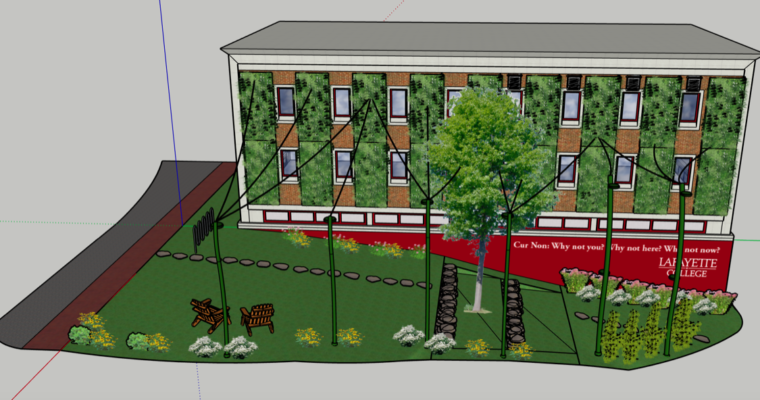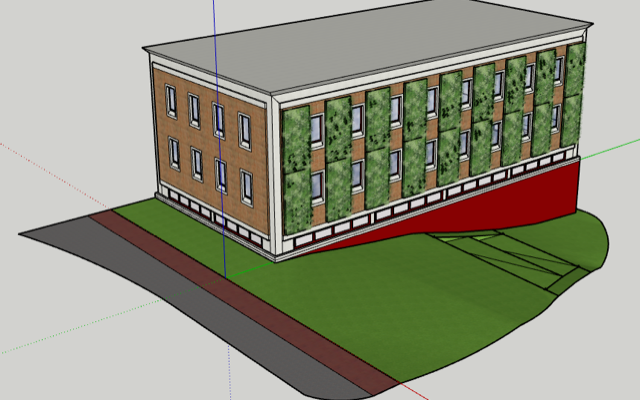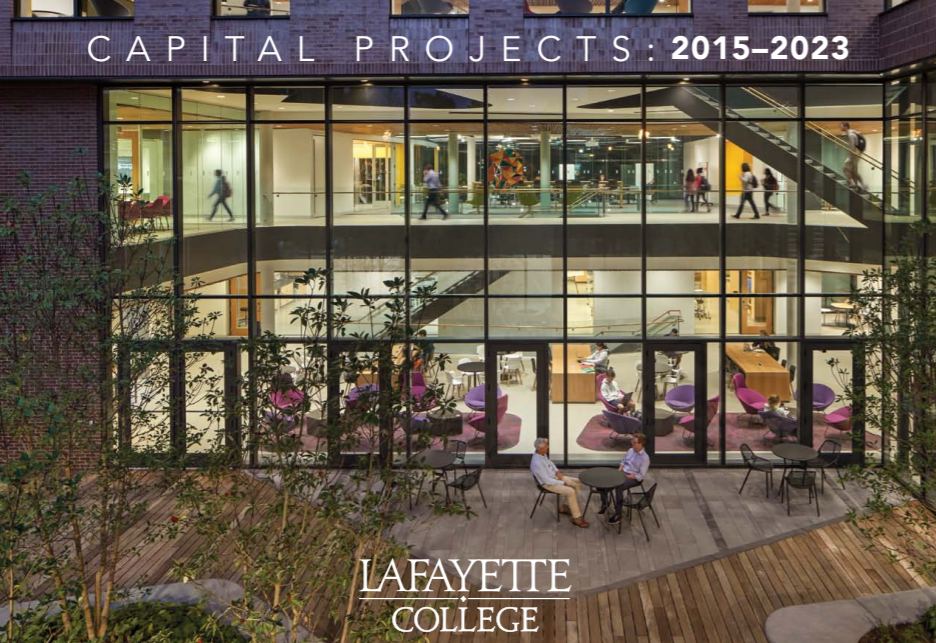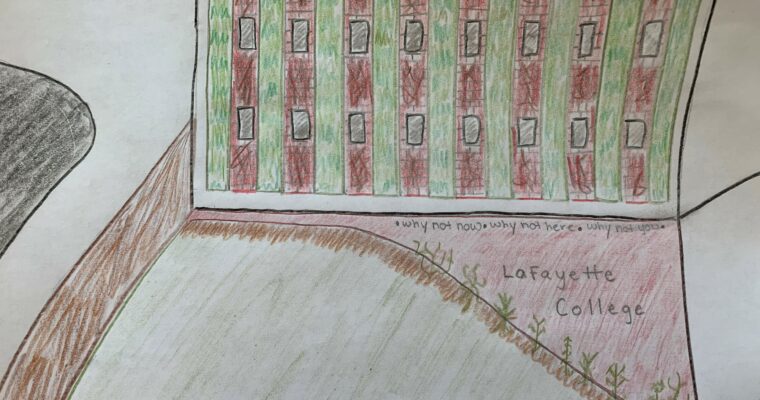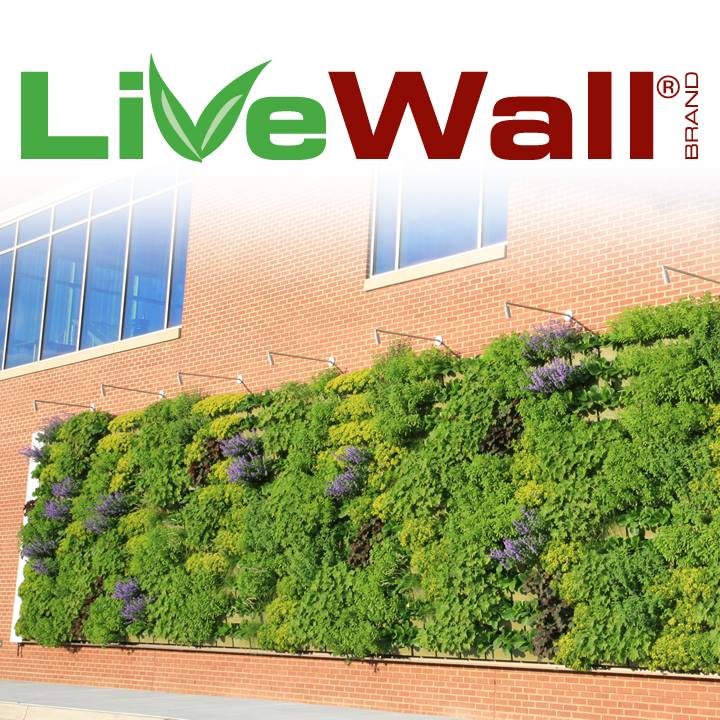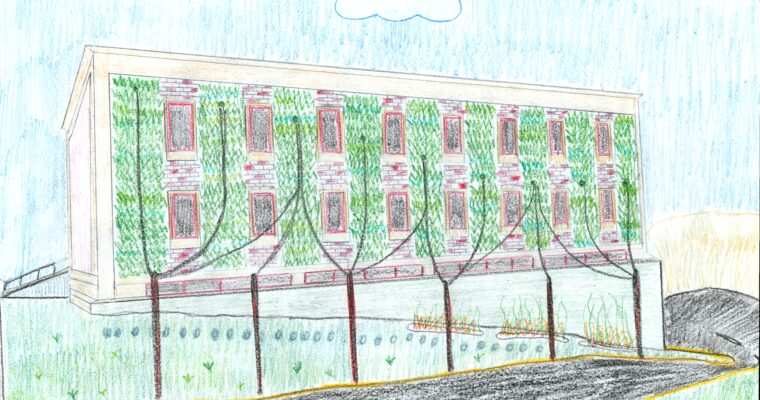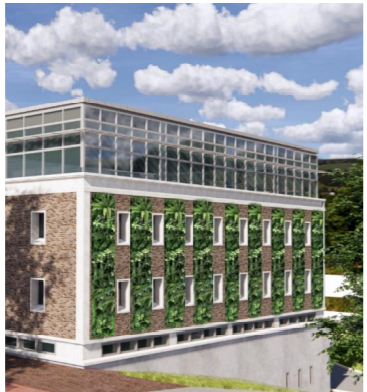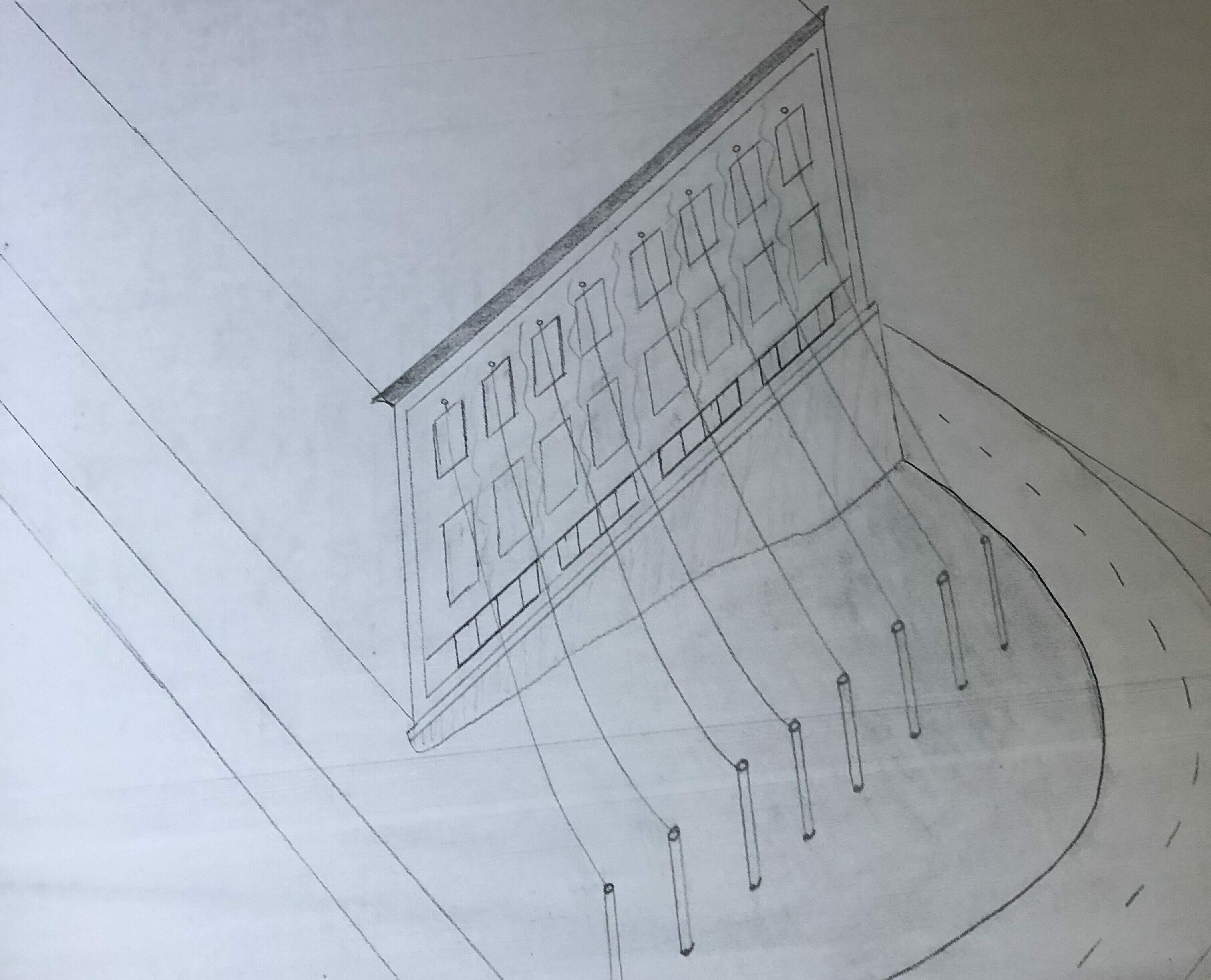Image provided by Lafayette College Facilities Planning
Over the course of the semester, the Greening Acopian team has developed various designs and has researched technological features in order to develop a strong plan for the Lafayette Gardens. But even with all of the time logged working on this project, one aspect remains unfamiliar to the members on the team: maintenance. In the hopes of gain a better understanding, the team met with the new director of Facilities Operations at Lafayette College, Mr. Scott Kennedy, on April 13 to hear his thoughts on the project.
Mr. Kennedy had been unable to attend the Midterm Update presentation in March. As a result, the team put together a brief presentation to summarize the project background as well as the economic, environmental, structural, and design aspects (slides can be viewed by following this link). Following the recapitulation, Mr. Kennedy and the Greening Acopian team immediately jumped into a discussion about the feasibility of developing and maintaining the space. Mr. Kennedy showed great enthusiasm and support for the project and was eager to provide insight and recommendations to help account for the maintenance aspects.
The first portion of the project that captured Mr. Kennedy’s attention was the technical and structural pieces of the living wall. Structural engineer, Major Jordan answered several of Mr. Kennedy’s questions and also directed the Facilities Operations Director to the Livewall website for more in-depth information. Being unfamiliar with the attachment mechanisms and materials used by LiveWall, Mr. Kennedy expressed some concern about the living wall’s durability and impact on Acopian but offered to research the details further. He also mentioned that one of the resources he would speak with is a group that works with the older buildings on campus. By sharing the current design with them, Mr. Kennedy hopes they will be able to help the team determine the overall feasibility of adding a living wall to the engineering building. In addition to offering to get in touch with the consultant group, Mr. Kennedy volunteered to look for the plant list produced by Lafayette College to see if it could help develop the final list for the project space.
Another concern addressed during the meeting was the timing of construction for the Lafayette Gardens. As Mr. Kennedy pointed out, Lafayette College is undergoing numerous structural changes in the next few years, all of which can be viewed in the Capital Projects Report linked here. He was worried that if the team planned to build the Lafayette Gardens within the next year, complications could result. However, there is not construction timeline set for the project. Instead, as the team explained during the meeting, their current expectation is to develop a detailed plan for the Lafayette Gardens and then hand it over to admissions for any future development. Even with this current plan, Mr. Kennedy brought up an important issue, with the renovations to the Markle Parking deck, the team should not only consider how the project appears from this new angle, but also how the changes to the surrounding area might impact the team’s final plan for the Lafayette Gardens. Additionally, Mr. Kennedy emphasized that, as with the developments portrayed in the Capital Projects Report, the Lafayette Gardens will need to be approved by the President’s cabinet, further proving the importance of understanding how the Greening Acopian project will fit into the Lafayette College atmosphere.
Upon receiving a question about the maintenance of the wall in the long term, Mr. Kennedy pointed out that with the current staffing available at the school, chances would slim that his employees would take care of the project space. He did however mention that hiring an additional grounds person could be a possibility but would take some preparation. As a result, maintenance costs, either to pay campus staff or an outside company, will be an important piece to consider in the project’s economic analysis.
To help Mr. Kennedy in his efforts to assist the team with the maintenance and construction requirements for the Lafayette Gardens, Nika Cinicola, the team’s Communication Director, sent an email to Mr. Kennedy following the meeting. This message included information about the current lists of plants for the space, the links to the LiveWall homepage and technical pages, as well as the contact for the LiveWall representative that the team’s Environmental Engineer, Diana De La Torre, spoke with earlier this semester. Hopefully, with the help of Mr. Kennedy, the team will be able to have a more comprehensive understanding of maintenance requirements for the project by May 11.
